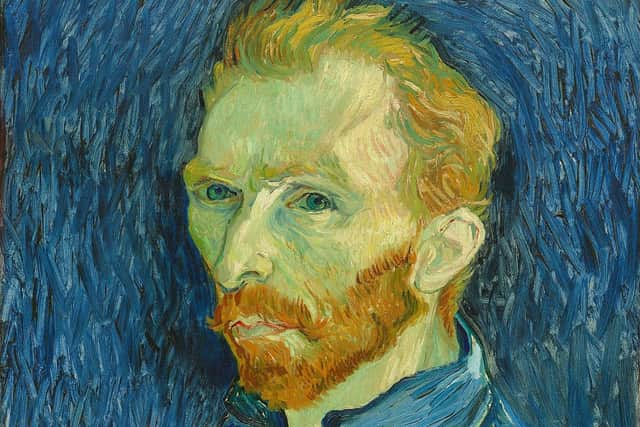Thought for the week: Van Gogh's colour-blindness
and live on Freeview channel 276
The world famous Vincent Van Gogh was born in Holland, the son of a church pastor. Despite the high ideals his family cherished, the young Vincent betrayed a lack of ‘stickability’, in both his studies and his work. Having learned something of the crushing poverty of peasants and coalminers in southern Belgium, he threw himself into the task of evangelism among them.
But a combination of his dishevelled appearance and his excessive zeal led to his dismissal. From that particular crisis he emerged with a determination to become an artist, an interest which his mother had encouraged from his earliest years. The restraints of religion were cast aside, and alcohol and the use of prostitutes, allied with his fiery temper were to make him a difficult companion.
Advertisement
Hide AdAdvertisement
Hide AdHe moved to Paris, became familiar in artistic circles with painters such as Paul Gauguin, with whom he shared an explosive relationship. It was after a quarrel with Gauguin that the demented man hacked off part of his ear lobe and gave it to a favourite prostitute. Meanwhile, he was working feverishly in his own style, signing each canvas with only his Christian name, Vincent. Although he was faithfully supported by his brother Theo, Vincent took his own life at the age of 37.


The ‘Van Gogh Immersive Experience’, currently open in the former Methodist Church at Belfast’s Carlisle Circus, brings his art gloriously to life. The stunning technology of the presentation and the bold colours make an unforgettable impression.
Hundreds of people have already enjoyed the enthralling exhibition which presents the art in an immersive way. In one video clip an expert argues that Van Gogh bold use of bright colours arose from the fact that he was colour-blind, with some colours which he was unable to see. It is an interesting conjecture.
Colour blindness, in another sense, is something we need to cultivate in our multi-cultural society. In this, as in so many ways, the Christian church has led the way. The writer of the Acts of the Apostles lists the membership of the church in ancient Antioch, including, Simeon called Niger, and Lucius of Cyrene (Acts 13;1).
Advertisement
Hide AdAdvertisement
Hide AdSimeon was obviously ‘dark-complexioned’, and may also have been from Cyrene in northern Africa. Paul stated the case most comprehensively when he wrote to the Galatians: “There is neither Jew nor Greek, slave or free, male or female, for you are all one in Christ Jesus’ (Galatians 3; 28).
During the days of racial segregation in the southern United States, a Christian leader defied the rules which insisted that black people occupy only the back seats in public transport. Bringing a black friend along with him, he seated himself boldly in the front section of the bus. When challenged by the conductor he asserted: ‘The God I serve is colour-blind’.
It’s a truth we dare never forget.